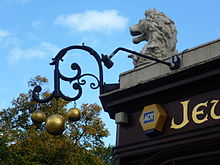A History of Pawnbroking:
Pawnbroking has a very long history of providing fast and convenient short-term loans in exchange for collateral. This method of lending dates back more than 3,000 years to ancient China, and is said to have thrived in the earliest written histories of ancient Greece and Rome.
Some restrictions were placed by the Catholic Church on charging interest during the Middle Ages which slowed the growth of pawn shops. However, in the fourteenth and fifteenth centuries in Europe these rules were relaxed out of economic necessity and because of problems with the banking system, making short-term lending an important way to provide capital once again. The expedition by Christopher Columbus to the New World was said to have been funded by Queen Isabella of Spain who pawned her jewelry as collateral. Powerful families such as the Medicis of Italy and the Lombards of England became well known as money-lending families. In 1388 England’s King Edward III pawned his jewels to the Lombards to help finance the war against France.
 In the nineteenth century and early twentieth century in Britain the number of pawnbrokers almost reached the same number of pubs. Following the failure of banks to lend money during the Great Depression, pawnshops were among the only institutions offering loans. Over the past century the number of pawnshops has grown rapidly in the US and Canada. Pawnbrokers have managed to turn around their reputation of being unfair. In the past twenty years, this image has changed dramatically and today, in small towns and big cities everywhere, pawnshops still serve as mini-banks for millions of people to obtain short-term loans in exchange for items such as gold and other jewellery.
In the nineteenth century and early twentieth century in Britain the number of pawnbrokers almost reached the same number of pubs. Following the failure of banks to lend money during the Great Depression, pawnshops were among the only institutions offering loans. Over the past century the number of pawnshops has grown rapidly in the US and Canada. Pawnbrokers have managed to turn around their reputation of being unfair. In the past twenty years, this image has changed dramatically and today, in small towns and big cities everywhere, pawnshops still serve as mini-banks for millions of people to obtain short-term loans in exchange for items such as gold and other jewellery.

 3279 Bayview Avenue (North of Finch)
3279 Bayview Avenue (North of Finch) Tel. (416) 225-0250
Tel. (416) 225-0250
